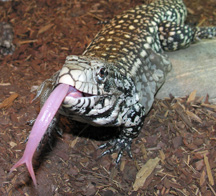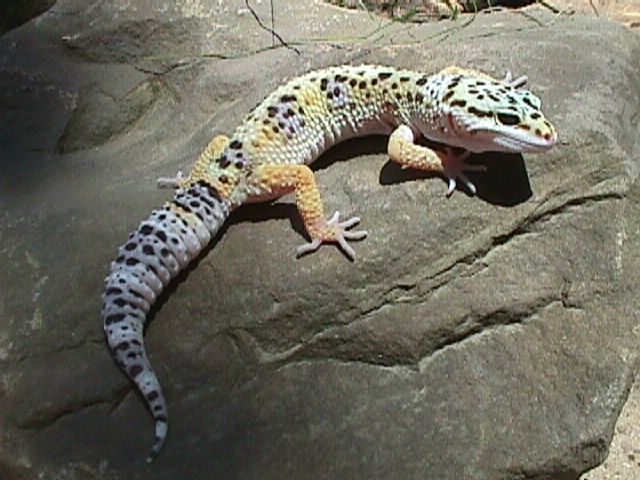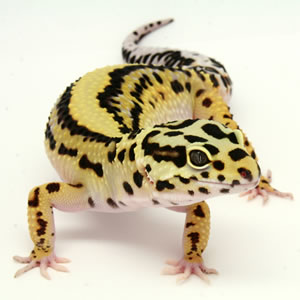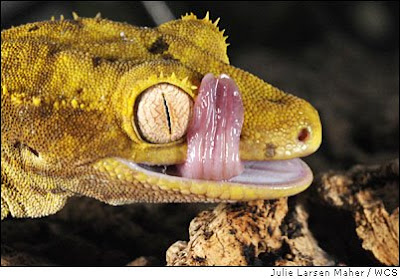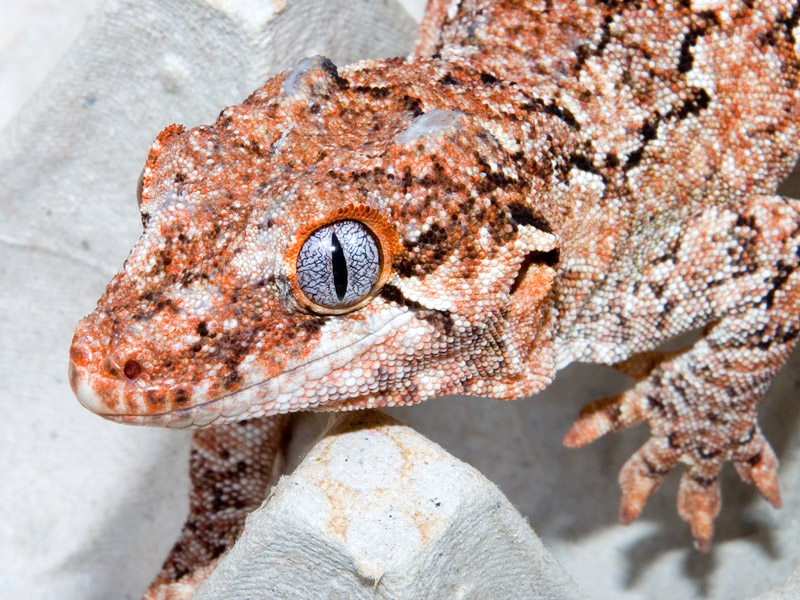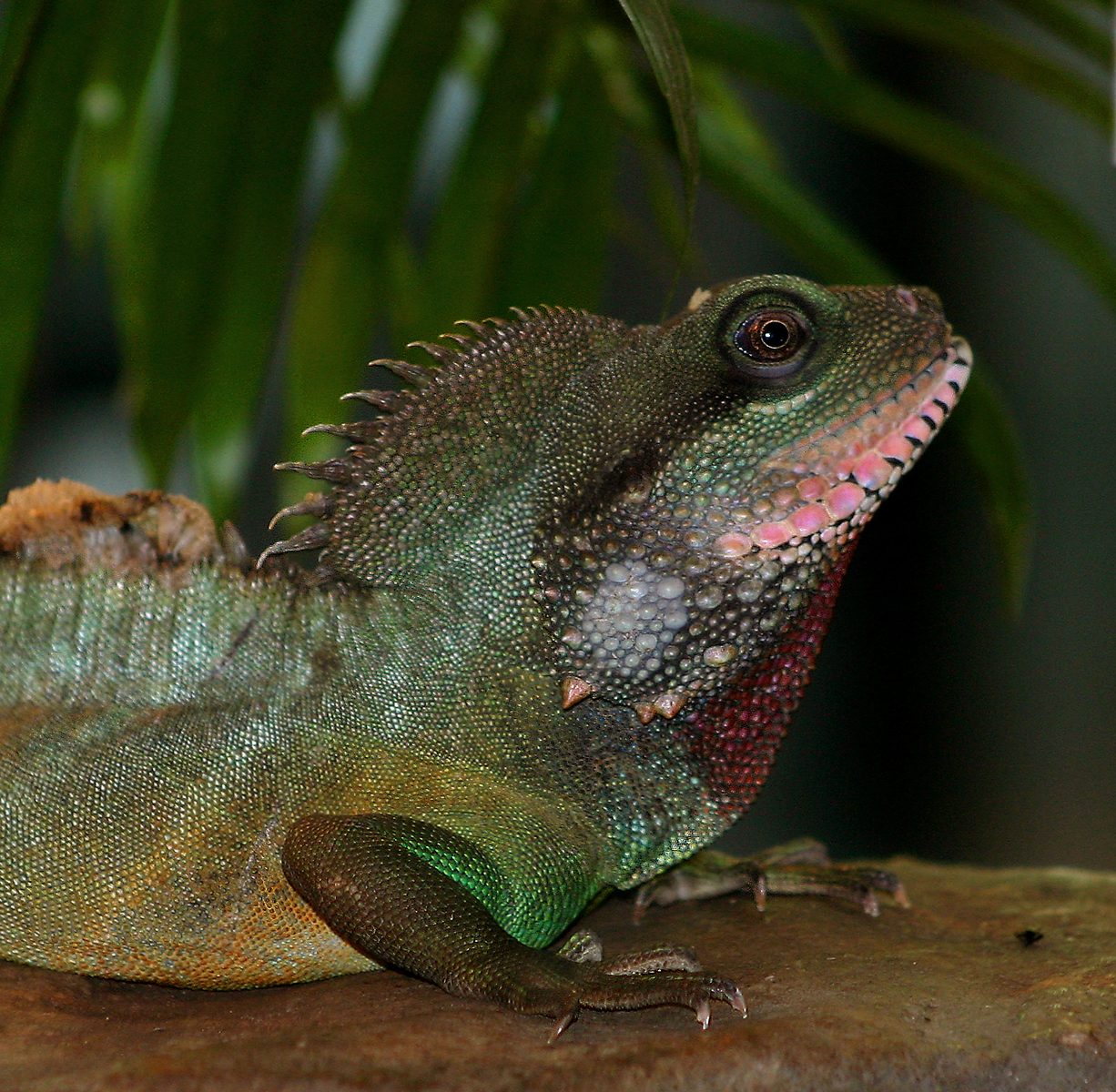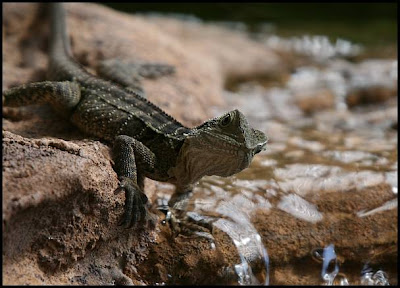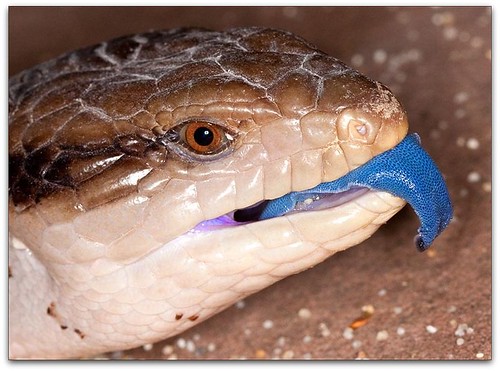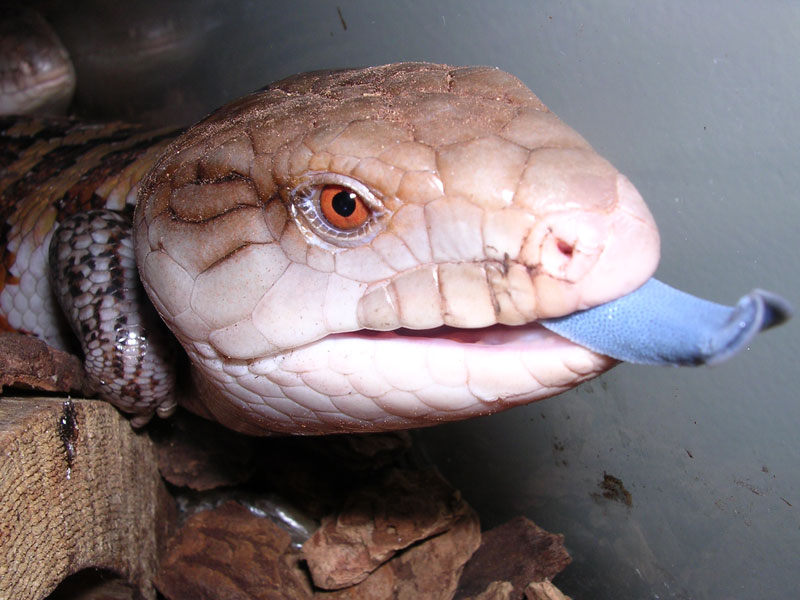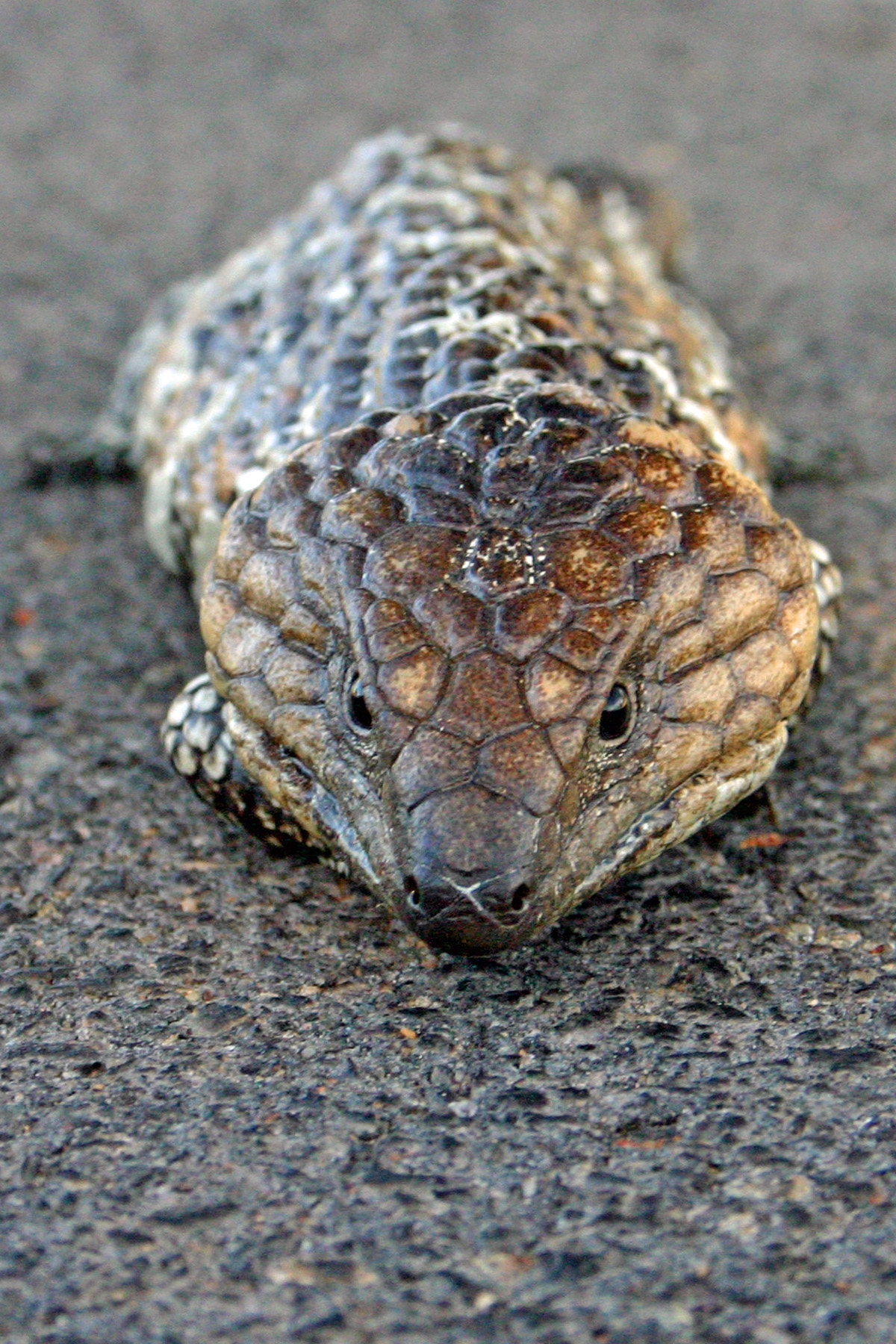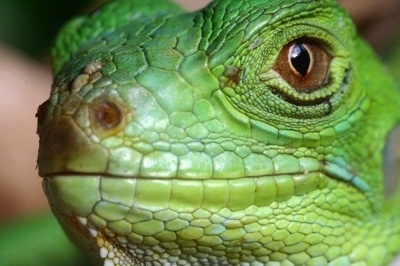Well, since I mentioned iggies in the "first reptile" post, I figured I should give them a decent caresheet lol. As opposed to how it may have come across, I actually really love iggies :mrgreen: They're really, really cool animals. They also bare a striking resemblance to their ancestors, the dinosaurs, which likely accounts for a lot of their popularity. Unfortunately, this is also the reason why so many iggies are left homeless: too many people just like to look of them and either don't know or don't care how to take care of them properly. Like I previously mentioned, Green Iguanas
(Iguana iguana) are the most commonly abandoned reptile, so look into adopting a homeless one rather then buying a new one if you feel an iggy is right for you.
Size: Adults usually grow to between 5-6ft, most of which is tail. (Note: Like varanids/monitors, the tail-whipping is often done in self-defence. But remember that this is often a last resort, so if you pay attention to your animal's body language, you should be able to avoid it.)
Housing: A
minimum 12ft Lx6ft Wx6ft H will house a single adult or a pair. (Note: Never house males together! Also, the enclosure should be an area of the house that is away from the TV, speaker systems, etc. because the noise and vibrations stress iggies out. Be careful not to put the branches so that your iguana can look down on you, especially with males because looking down on someone is a sign of dominance. Like dogs, iggies have complex social hierarchies)
Substrate: Bark mulch and peat moss are good substrates. (As always, when using a loose substrate such as these, care should be taken to ensure that none of it is ingested, which would likely result in impaction. A bowl or plate are a good way to prevent this, but the animals should still be monitored while they're eating.)
Heating: A basking area of around 95 degrees F should be provided, but it should never exceed 97 degrees F. The warm side ambient temp should be between 80-90 degrees F and the cool side ambient temp should be between 75-80 degrees F. The nighttime temp can get as low as 68 degrees F, but no lower.(Note: If housing muliple animals is a single enclosure, you should proved at lest the same number of basking spots as there are animals, just to reduce the risk of fighting.)
Humidity: Humidity should be maintained between 70-75%. It should never drop below 65% and during shedding it can be kicked up to as high as 90%.
Feeding: Even though many people claim otherwise, iggies are
completely herbivorous. They
will often eat animal protein, but that doesn't mean that they
should. Iggies that are frequently fed animal protein often have many more health problems then iggies that are fed a strictly herbivorous diet. The ideal iggy diet breaks down like this: 80% leafy greens [
romaine lettuce, watercress, endive, mustard greens, bok choi, collard greens, carrot tops, broccoli leaves (not florets), turnip greens (not the tuber part), chicory greens, parsley, alfalfa, dandelions (leaves and flowers), hibiscus (leaves and flowers), dahlia (leaves and flowers) geraniums (leaves and flowers), daisies (leaves and flowers)], 15-10% other veggies (sugar snaps, cassava, squash, cucumbers, asparagus, bell peppers, green beans, okra, parsnip, tomato), 5-10% fruit (figs, kiwi, seedless grapes, dates, strawberries, raspberries, blackberries, mango, prickly pear cactus leaves) All food items should be washed and chopped, shredded, crushed, etc. before being offered to the iggy.
Some food that you should avoid are: cabbage, kale, chard, broccoli florets, cauliflower, beets, sprouts.
NEVER feed any of the following, as the are toxic: fruit seeds (apple, pear, cherry, nectarine, etc.), avacado, eggplant, christmas cactus, pointsettia, rhododendron, mistltoe, tulips, azaleas, lily-of-the-valley, daffodil, rosemary, sage, marijuana (I know it seems obvious, but you'd be surpised to know how many people have fed this :doh: ) As you may have noticed, many of these are commonly grown as houseplants...make sure when you're giving you're iggy some free time out of the enclosure, that you put away any houseplants. Any toxic ones will poison you iggy, and and any non-toxic ones will be eaten alive :wink: It should also be noted that you should avoid feeding iceberg lettuce altogether. It has no nutritional value whatsoever, but it's also proved to be very addictive to iggies and they'll refuse to eat anything else. Also, every other meal should be dusted with calcium for juveniles, but only 2 or 3 times a week for adults. Finally, despite the fact that they're herbivores, a
rare treat that is greatly appreciated by iggies, is a cubes of whole grain bread. It should be dampened first, so it doesn't expand in the iggies throat.
Iguanas are awesome reptiles to own, but you need to be prepared for the immense responsibility you would be taking on. Breeding season is something that should strongly be considered when thinking about bringing an iggy home. It should be noted that not all iggy's go through the motions of breeding season, but most do and you can't bank on your iggy not being affected. Both genders will go through significant changes, both phisically and behaviorally during breeding season. Females, wheather they have mated or not, will become gravid wth eggs and will lay infertile clutches. During this time they will stop eating, and if they don't lay their eggs, you will need to take her to the vet because if she has retained the eggs it could be deadly. Also you would have to be careful with handling, because she will become skittish, but you could also break the eggs inside her which could also be deadly. Males during breeding season, will start to change to an orange-ish colour, and he will start leaving "sperm plugs" and semen all over his cage. He will also become messier in his toilet habits then usual. In the wild this is done to mark his territory and attract females...but it's kind of gross to have to clean up lol. However, the most significant change in male iguanas during breeding season, is that they become VERY aggressive. Their reaction to you will depend on if you are a guy or girl. If you are a guy,he will feel like you are trying to take his territory and will try to tail-whip and bite you. Watch for head bobbing! That is his way of telling you that he isn't happy that you are around right now. (Head bobbing can happen all year around, but watch for it especially during breeding season) If you are a girl, he will still be aggressive towards you, but for a diffrent reason: he is trying to mate with you lol! He will become very sneaky, like he is stalking you, and if he gets half a chance, he will grab your foot, leg or whatever and bite...hard. They bite female Iguanas when mating, but Iguana skin is a lot tougher then human skin, and these bites can be quite serious.
I'm not saying Iguanas are bad pets, but they are not really suitable for a first time reptile owner. They need an experienced and patient keeper. I personally love Iguanas. I have a great respect for them, and I have many good memories, like sitting out in the backyard on warm sunny days with my Quincy, a boy that I rescued, eating dandelions, but I also remember that we had some hard times. During breeding season, I would wear like 5 pairs of pants, because I knew it was just a matter of time before he got me and I didn't want to have to go to the emergency room. It's a good thing I did too...he got me at least once a season, and thanks to my layers, all I ever got was a nasty bruise. All and all, with Iguanas when things are good, they're good, but when they're bad, they're bad. Something cool about wild iggies is, that they usually live in family communities. Males will fight for dominance and typically there is only one male per colony. When the colony is threatened, the male will use his body to block the attcker(s) from getting to the females and babies. Iguanas are one of the few reptiles that have this kind of communal behavior. Unfortunately, iggies natural reflexes have been turned against them: because they are often preyed on by birds of prey, iggies will instictively freeze when they hear a shriek or whistle. When they freeze, it makes them extremely difficult to see from above because their colour blends them into the vegetation. However, poachers have learned about this and use it to their advantage. They go out looking for Iguanas and when they find them, they make a bird-of-prey like screech which causes the Iguana(s) to freeze, making them easy targets.

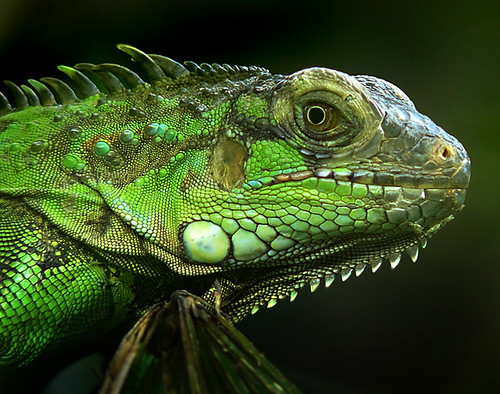
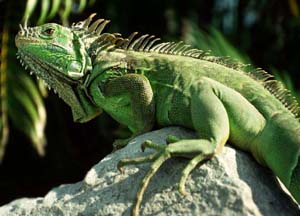
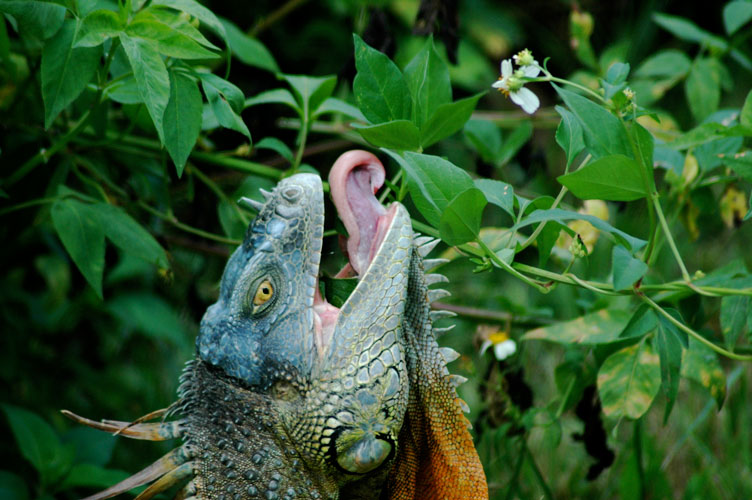
^An wild iggy displaying the typical iggy determination. This is why you hide your houseplants when they come out of their enclosure :wink:
^A male iggy showing the colour changes that happen during breeding season











